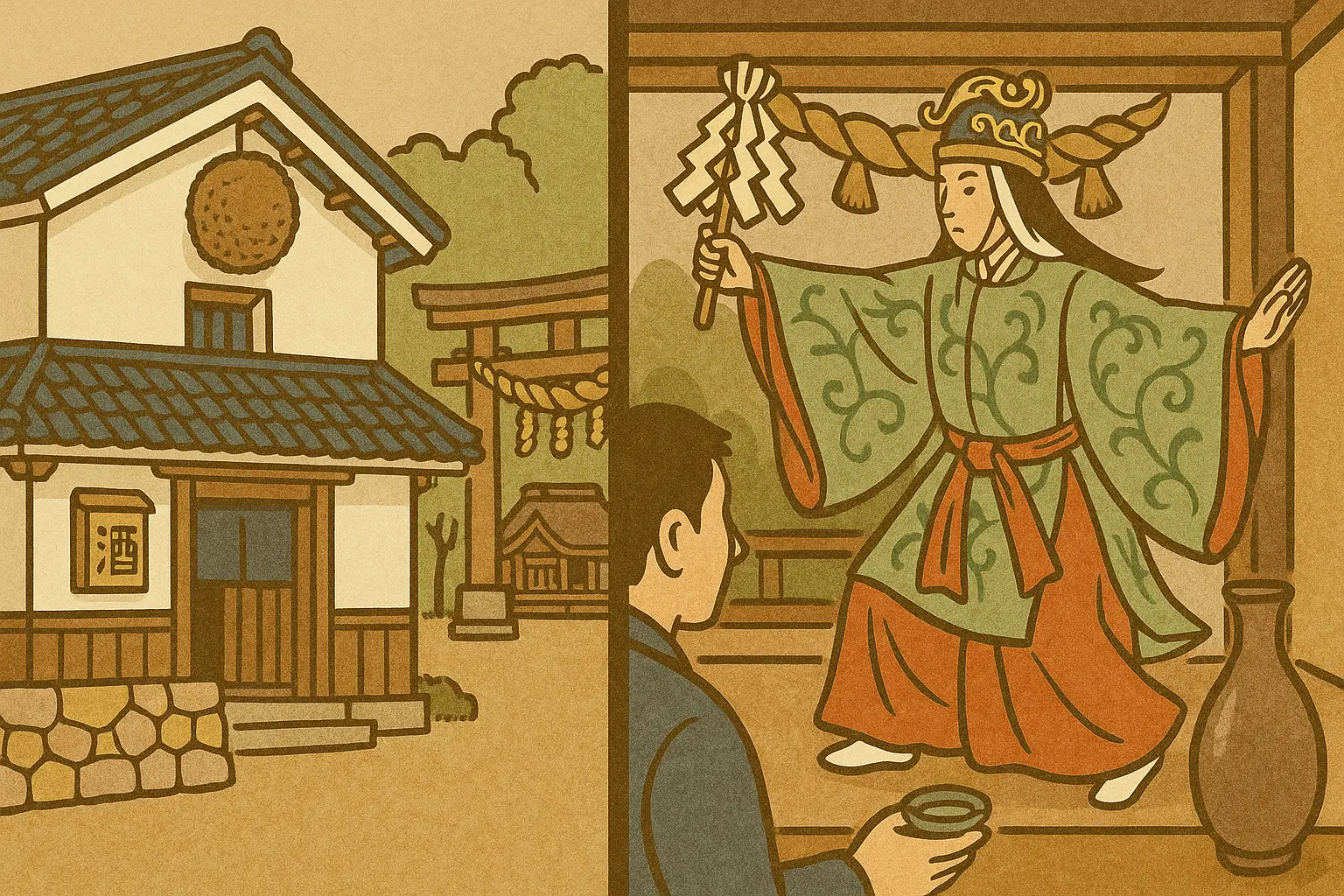
Regional Sake Styles Across Japan
From the delicate flavors of snowy regions to the bold character of Nada, and the distinctive personalities of Kyushu—local sake tells the story of land and people. A journey through Japanese sake styles, to be savored like a voyage.
Regional Sake Styles Across Japan
Sake is “a drink brewed by the land.”
Water, rice, climate, and human hands—all create flavors unique to each region.
It’s a drink to be savored like a journey.
North, south, east, and west—the more you compare, the deeper you see into the heart of the Japanese archipelago.

Northern Sake: Bottling Tranquility and Pure Mountain Air
Hokkaido
Crystal-clear flavors like snowflakes
- Climate: Extreme cold down to -20°C. Fermentation proceeds slowly.
- Water: Ultra-soft water from melting snow. Smooth mouthfeel.
- Taste: Light, sharp, and modern drinking style.
- Representative breweries: Takasago Brewery, Chitose-tsuru
- Features: Active in technical innovation, with notable young brewers taking on challenges.

Tohoku Region (Akita & Yamagata)
Snow country’s delicacy with a strong core
Akita
- Taste: Cool and refined dry sake, perfect for snowy winter nights.
- Rice region: Akita Sake-komachi, Yamada-nishiki
- Representative breweries: Aramasa, Takashimizu
Yamagata
- Taste: Fruity, fresh fragrance with crisp acidity.
- Representative brands: Juyondai, Dewazakura

Central Region Sake: Transparent Intelligence Nurtured by Mountains and Water
Niigata Prefecture
Synonymous with light and dry, “a cup like melting snow”
- Water: Gentle soft water from mountain snowmelt.
- Taste: Clean with no off-flavors, cuts smoothly down the throat.
- Representative brands: Kubota, Koshi no Kanbai, Hakkaisan

Nagano Prefecture
Mineral aftertaste born of mountain highlands
- Climate: High altitude, cool and stable fermentation environment.
- Taste: Transparency and minerality, like mountain spring water.
- Representative breweries: Masumi, Daishinshu
Kansai Sake: Drinking History, Tasting Umami
Hyogo Prefecture (Nada)
Combining strength and gentleness, the royal road of sake
- Water: The legendary “Miyamizu” is hard water.
- Rice: Main production area of “Yamada-nishiki,” the king of sake rice.
- Taste: Full-bodied with rich umami. Aromatic even when warmed.
- Representative brands: Hakutsuru, Ozeki, Kenbishi

Kyoto Prefecture (Fushimi)
Elegant and mellow taste like Kyoto confections
- Water: The famous “Fushimizu” is soft medium-hard water.
- Taste: Smooth, subtly sweet, and feminine.
- Breweries: Gekkeikan, Kizakura, Tamanohikari
Chugoku Region Sake: Where Tradition and Innovation Intersect
Hiroshima Prefecture
Aromatic cups supported by soft water
- Features: The first region in Japan to establish soft water brewing—a land of innovation.
- Taste: Gentle mouthfeel and roundness.
- Representative brands: Kamotsuru, Seikyo
Shimane Prefecture
Deep flavors nurtured in the land of myths
- Background: Sake brewing that walks alongside the culture of Izumo Taisha and kagura.
- Taste: Rich with dense body and umami.
- Breweries: Izumo Fuji, Gassan, Orochi

Kyushu Sake: Free Expression Where Southern Individuality Sparkles
Saga Prefecture
Innovation zone where new generation star breweries gather
- Notable breweries: Nabeshima and other internationally acclaimed brands.
- Taste: Sharp, aromatic, and refined impression.
Kumamoto Prefecture
Birthplace of “Kumamoto yeast,” the mother of ginjo sake
- Taste: Gorgeous with subtle sweetness.
- Representative brands: Koro, Zuiyo

Four Elements That Change Regional Flavors
1. Water
- Soft water (Kyoto, Niigata): Mellow, brings out sweetness
- Hard water (Nada): Yeast works actively, creating full-bodied sake
2. Climate
- Cold regions: Slow fermentation → fragrance and transparency
- Warm regions: Fast fermentation → body and umami
3. Rice
- Yamada-nishiki (Hyogo): Well-balanced universal type for sweetness, acidity, and aroma
- Gohyakumangoku (Niigata): Suited for clean, light styles
- Regional rice: Unique varieties highlight sake’s individuality
4. Culture and People
- Local community-focused small breweries, young brewers continuing to challenge
The “Flavor Map” Visible Only Through Comparison
Regional Characteristics Comparison
| Region | Aroma | Flavor Depth | Recommended Temperature |
|---|---|---|---|
| Northern | Delicate・Floral | Light | Cold |
| Central | Gentle・Elegant | Medium | Cold~Room temp |
| Kansai | Subdued・Calm | Full-bodied | Room temp~Warm |
| Kyushu | Gorgeous・Bold | Unique | Wide range |

Pairing Hints
- Northern: White fish kombu-jime, cold shabu-shabu
- Central: Mountain vegetable tempura, Shinshu soba
- Kansai: Sawara saikyo-yaki, sukiyaki
- Kyushu: Pork bone stew, karashi renkon
First Steps in Local Sake Exploration
- “Niigata vs Nada” comparison of light-dry and rich-umami styles
- Water differences - try soft water vs hard water awareness
- Seasonal limited sake (hiyaoroshi, new sake) to taste the season
- With local cuisine - this is the true essence of local sake

Local Sake: Stories of Land and People
When you taste that sake, distant mountain ranges, babbling streams, and people’s lives come to mind.
Sake is a journey of tasting the land, an experience of feeling culture on your tongue.
Tonight, please savor your cup while thinking about “where this sake was born.”
Next reading: “Sake and Shinto Rituals” or “Yeast and Fermentation in Japanese Sake” are also recommended.